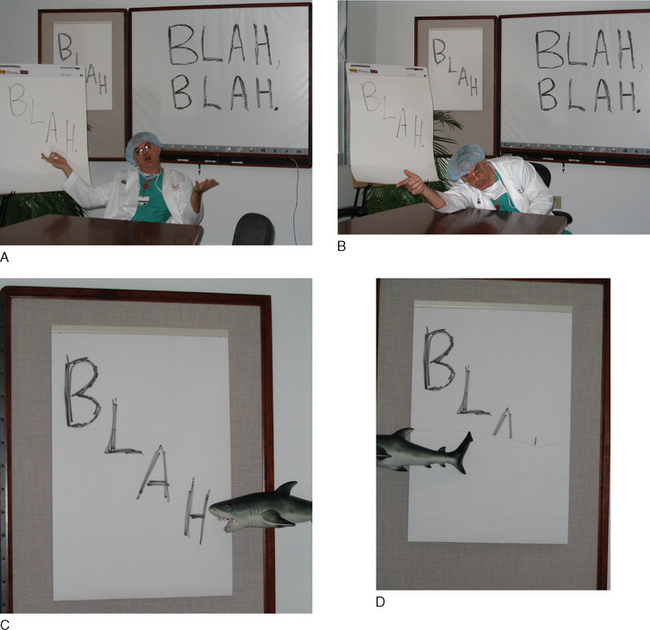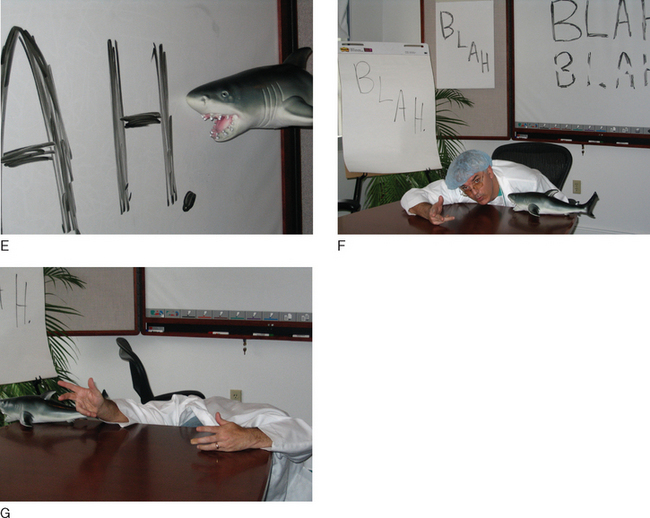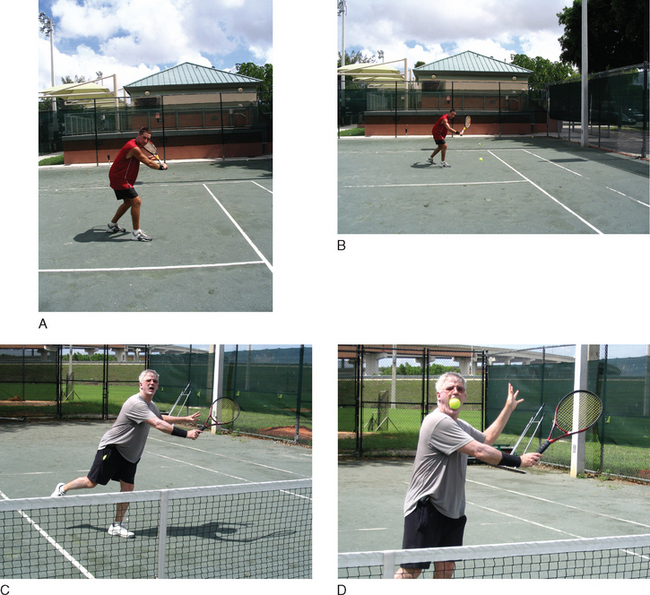CHAPTER 4 Working on Communication Skills in the Simulator
Picture yourself sitting in front of a person with a doctorate in education (EdD) from Harvard. This professor now holds joint appointments at MIT and Harvard.
You ask a question about the behavioral aspects of Simulation training.
“Well”, the professor with ties to MIT and Harvard says, “you have to read.”
And the professor looks at you.
Who are we to argue with that?
An initial reaction might be, “Ah, to hell with that psycho-babble. I’m training people in the clinical arena! Codes! Shock! STAT! That’s the ticket. The Simulator was never meant to be a marijuana-laced, Haight-Ashbury-esque, harmonic convergence love fest. Nor is the Simulator meant to teach us how to talk ‘administrative-ese’ like a bunch of CPAs. So let’s skip the ‘getting in touch with our feelings’ and the ‘prioritization of goal-oriented intermediary assessment protocols.’ That’s all sissy stuff.”
CRISIS RESOURCE MANAGEMENT
Crisis is a can of Coke that you shake up, then pop open all at once.
Management is a can of Coke you left sitting open in the fridge for 3 days.
Conceptualizing
The Professor was right: “You have to read.”
Hmm. Where to now? Here are the questions:
Here is the answer to the first question: What should I read?
Here is an answer to the second question, “How do I make this reading ‘meaty’?”
COMMUNICATION AND BEHAVIORAL STUFF WRIT GRITTY FOR MEDICAL FOLK
Learning
“The first stage of contact with any new material … must inevitably be of the trial and error sort.”
Bingo! Go into the Simulator, try to intubate a swollen airway, change the head position, try a different blade…. No go? Eventually you “trial and error” your way all the way to a surgical airway, placing a catheter into the Simulator’s cricothyroid membrane and starting jet ventilation.
Dewey said, “What is [needed is] an actual empirical situation as the initiating phase of thought.”
That’s a 4+ empirical situation for learning.
“Oh man! I’m thinking vagal, then V tach!”
“Did you catch the temp rising?”
“How come you got the tube in—his mouth was like a rock!”
Compare that with your average “regular” lesson, a lecture.
The more you read Dewey, the more you love the Simulator.
You remember your “Hillary’s Step” lessons. You tend to forget your “Borders” lessons.
How About Medical Education?
“Hang around long enough, and you’ll see what you need to see,” goes the traditional thinking.
Enter the Simulator
And when you look at it from another angle, it makes sense that we practice on un-killable Simulators. With a Simulator, we are doing our first learning on a pretend person. We are doing our first drive in a pretend car, our first flight in a pretend plane.
Errors
(Or better yet, just sit back and enjoy. These stories rock!)
So put on your “medical education” cap and follow along. The questions you ask yourself are:
If you’re not in the learning mode but are just in this for voyeuristic thrills, ask yourself:
Show Me the Money
Now go to the three questions.
At the foundry, the floor workers had to do a Simulation where they designed more efficient molds. Voila! They generated less scrap, saved money, and took this lesson back to the factory. And now the foundry is in the black. Uh, as in black ink, not black soot.
Well hot diggity dog, the Simulator did come to the rescue!
Could a Medical Simulator work similar magic?










